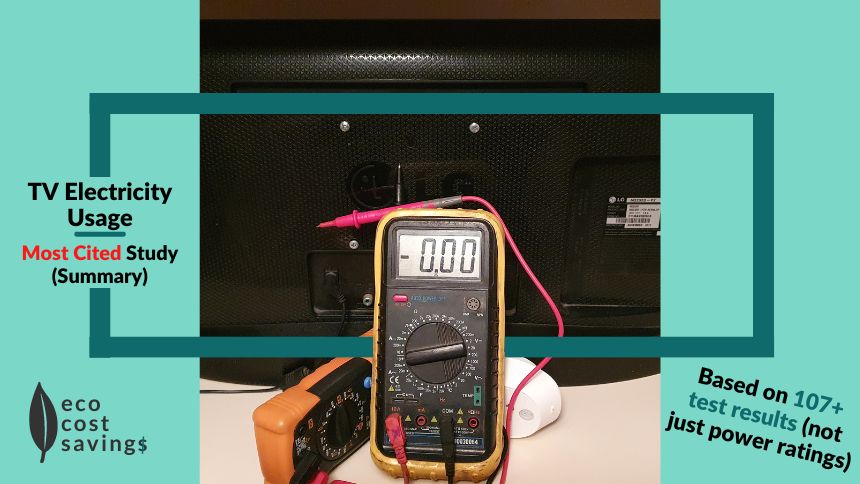Last updated: February 10, 2024.
From standby mode, to gaming and max capacity, get a cost breakdown of running the Xbox Series X per hour, month and year. And get 4 tips that’ll save you money and minimize your carbon footprint.
Games consoles are becoming more and more powerful. More power usually means more power consumption. So let’s take a look at the electricity cost of running one of the most powerful consoles on the market, the Xbox Series X.
On average, in the US, it costs 2.7 cents per hour of gaming on the Xbox Series X. The average US gamer can expect to pay 19 cents per week, 80 cents per month and $9.64 per year in electricity to run their Xbox Series X.
The instant-on standby mode can cost as much as $31.61 per year in electricity costs for the average US gamer.
Continue reading to see how these costs have been worked out and get 4 simple tips that you can use to reduce the cost of running your Xbox Series X.
Your TV will add to your electriccity bills too – don’t miss this related post: Cost To Run A TV Revealed [8 Cost Saving Tips + Calculator].

- Xbox Series X electricity consumption
- Xbox Series X power consumption calculator
- How much does it cost to run an Xbox Series X per hour?
- Xbox Series X cost to run per week, month and year
- Xbox Series X standby cost per week, month and year
- Xbox Series X running cost calculator
- 4 simple Xbox Series X energy saving tips
- How do PS5 consumption costs compare?
Xbox Series X electricity consumption
Eurogamer analysed Xbox Series X power consumption in detail.
To summarize, taking the highest rating recorded, the table below breaks down the different Xbox Series X electricity consumption levels for different modes.
| Mode | Electricity Consumption |
| Power Off (Max) | 2W |
| Standby (Instant-On) | 29W |
| Dashboard | 42W |
| Gaming (Max Found To Date) | 211W |
| Max Capacity | 315W |
The different modes consume different amounts of electricity.
In standby mode, the Xbox Series X consumes 29W.
When powered off, but still plugged in, the Xbox Series X can consume up to 2W.
The console has a power rating of 315W and the maximum consumption recorded when gaming was 211W.
But what about its power consumption over longer periods of time?
Use the calculator below to see your own Xbox Series X power consumption results based on your own usage.
Xbox Series X power consumption calculator
See how much power your Xbox Series X consumes per hour, day, week, month, and year.
Simply enter your daily usage, for each mode, to see how much electricity your Series X uses.
The calculator is pre-populated with the Series X wattage (so the max power it can possibly draw), and the power draw on Standby with instant On.
If needed, update the wattage fields to better reflect your own usage. Use the electricity consumption table above to see the power draw for various modes, including Gaming, Dashboard display, and Standby / Power Off.
Results assume continuous max draw for each mode.
So, now that we know how much electricity the Series X consumes, we can work out its running costs.
How much does it cost to run an Xbox Series X per hour?
Now that we know the power consumption, we can simply use the average cost of electricity (per kWh) to work out the costs of running a Series X for an hour across the different modes.
The table below shows how much it costs to run an Xbox Series X for an hour in the US, Canada and the UK.
| Mode | Consumption | Cost p/h US (13c kWh) | Cost p/h Canada (C$0.15 kWh) | Cost p/h UK (17p kWh) |
| Power Off (Max) | 2W | $0.00026 | C$0.00030 | £0.00034 |
| Standby (Instant-On) | 29W | $0.0038 | C$0.0044 | £0.0049 |
| Dashboard | 42W | $0.0055 | C$0.0063 | £0.0071 |
| Gaming (Max Found To Date) | 211W | $0.027 | C$0.032 | £0.036 |
| Max Capacity | 315W | $0.041 | C$0.047 | £0.054 |
In the US, on average, it costs 2.7 cents per hour of gaming on the Xbox Series X. At maximum capacity, it costs over 4 cents per hour, while in standby mode it costs just close to ⅓ of 1 cent.
On average, in Canada, it costs 3.2 cents (CAD) per hour when gaming on the Series X. It costs closer to 5 cents (CAD) per hour at max capacity and nearly ½ of 1 cent (CAD) per hour on standby.
In the UK, it costs 3.6p per hour of gaming on the Xbox Series X. At maximum capacity, it costs 5.4p per hour to run. While on standby, it costs just under ½ of 1p.
But how much does it cost over a longer period of time?
Xbox Series X cost to run per week, month and year
Now that we know the running cost for each mode per hour, let’s take a look at how much our electricity costs could be per week (p/w), per month (p/m) and per year (p/y).
To work this out let’s use the average number of ours gamers in the US spend gaming – 6.76 hours p/w.
The table below shows the average weekly, monthly and annual cost that US gamers can expect to pay in electricity charges to run their Xbox Series X.
| Mode | Cost p/w | Cost p/m | Cost p/y |
| Gaming (Max Found To Date) | $0.19 | $0.80 | $9.64 |
| Max Capacity | $0.28 | $1.20 | $14.39 |
In the US, on average, gamers can expect to pay 19 cents per week, 80 cents per month and $9.64 per year in electricity to run their Xbox Series X.
At maximum capacity, it costs US gamers 28 cents per week, $1.20 per month and $14.39 per year, on average, in electricity costs to power their Xbox Series X.
Notably, it costs Xbox Series X gamers $1.60 less per year at max capacity compared to PS5 gamers playing the same amount. See how much it costs to run a PS5 per week, month and year in the US. Alternatively, get the direct PS5 vs Xbox Series X power consumption comparison, here.
So now we know what it costs on average while gaming, but what about when the console is not in use?
Xbox Series X standby cost per week, month and year
US gamers spend 6.76 hours per week gaming. So obviously they spend 161.24 hour per week not gaming (at least not on their consoles).
Let’s take the extreme case. Let’s assume that gamers don’t use their console for anything else, like streaming.
Let’s also assume that they leave their console in standby mode when they’re not gaming.
Then how much does standby mode on Xbox Series X cost over a longer period of time?
| Mode | Cost p/w | Cost p/m | Cost p/y |
| Power Off (Max) | $0.04 | $0.18 | $2.18 |
| Standby (Instant-On) | $0.61 | $2.63 | $31.61 |
Also included in the table is the power off mode where the console can consume up to 2W while still plugged in.
In the US, on the average price per kWh, if gamers leave their Xbox Series X on standby mode (instant-on) when not gaming they can expect to pay 61 cents per week, $2.63 per month and $31.61 per year in electricity costs.
Standby mode can cost over twice as much in electricity per year compared to gaming.
Again, this is an extreme case and not likely to occur. But it does help put the potential wastage into perspective.
We can obviously save money and reduce our carbon footprints when turning off the console completly.
I mentioned this alarming statistic when working out PS5 electricity costs, but it’s worth repeating:
Carbon-dioxide emissions from gaming in the US is equivalent to running over 5,000,000 cars.
And with that, let’s take a look at how you can reduce your carbon footprint when gaming, while also reducing your electricity bills.
But first, here’s a useful calculator that’ll help you work out your own Xbox Series X running costs, based on your own usage and the price you pay per kWh.
Xbox Series X running cost calculator
Use this Xbox Series X running cost calculator to see how much it costs you to run your Series X, based on your electricity cost and usage.
Simply enter your usage, and the price you pay per kWh, to see your electricity costs per hour, day, week, month, and year.
Results assume continuous max power draw during usage.
OK, back to the carbon footprint and energy saving tips.
4 simple Xbox Series X energy saving tips
- Unplug. This can stop you wasting over $30 p/y while also reducing your energy wastage.
- Use the Xbox Series X energy-saving mode. To change to this mode, go to My Games and Apps > Settings > Power mode and Startup from the General tab > Select Power Mode. And while you’re at it, set your controllers to turn off automatically too.
- Don’t stream. If you have a Smart TV or a streaming stick, like Chromecast, use that. Xbox Series X is a games console not an unnecessarily powerful streaming device (I need to remind myself of this sometimes).
- Be careful of your set up. Don’t set your console up between your set-top box and TV. This can require your console to be turned on unnecessarily when using your set-top box.
How do PS5 consumption costs compare?
As I mentioned, it costs Xbox Series X gamers $1.60 less per year at max capacity compared to PS5 gamers playing for the same duration. But which is cheaper to run when powered off and when gaming?
Get the direct PS5 vs Xbox Series X power consumption comparison, here.
Alternatively, get more details about the cost of electricity required to run a PS5 and see how overall gaming consumption compares with other household appliances.
-
Post-Holiday Bill Shock: Why Your Electric Bill Is So High
Discover the reasons behind unexpectedly high electricity bills after the holidays, learn what you can do about it, and find easy ways to keep your future bills low.
-
TV Electricity Usage | Most Cited Study | 107+ Tests
How much electricity does a TV use? Find out, here, from the most cited TV electricity usage study. Results are based on actual TV energy usage tests, not simply TV power ratings.
-
Turn Any TV Into A Solar Powered TV: Easy 5 Step Solution
You don’t need to be an electrician or pay any labor costs to start your energy independence journey. Safely transform any TV into a solar powered TV with these 5 easy steps.
James, Eco Cost Savings co-founder and Editor-in-Chief, is also our experienced in-house energy management and sustainability expert, and manager of our network of sustainability consultants.
Before his journey into sustainability, James studied engineering. Additionally, he has experience in HVAC installation, and data analysis. A self-proclaimed practical environmentalist, and avid penny pincher, James established Eco Cost Savings to share his and his colleague’s expertise with the aim of helping to reduce energy bills and carbon footprints at scale.



